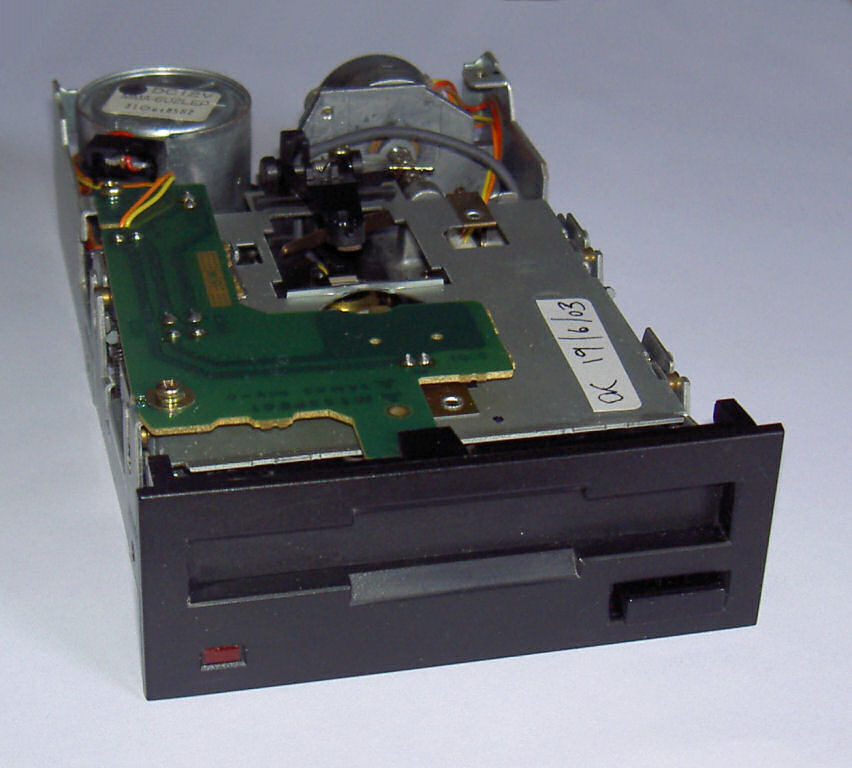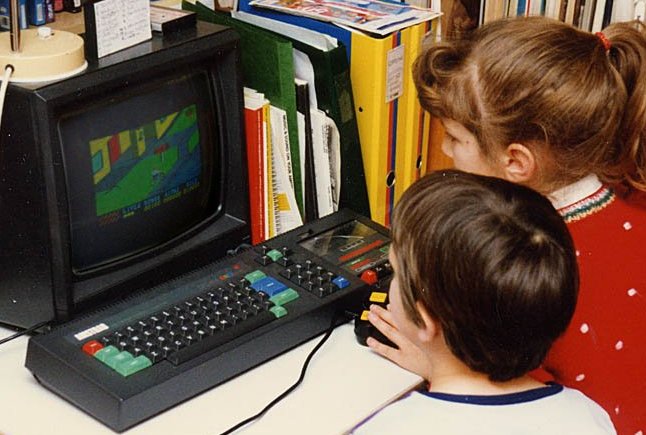|
Infocom Games
Infocom, Inc., was an American software company based in Cambridge, Massachusetts, that produced numerous works of interactive fiction. They also produced a business application, a relational database called ''Cornerstone''. Infocom was founded on June 22, 1979, by staff and students of Massachusetts Institute of Technology, and lasted as an independent company until 1986, when it was bought by Activision. Activision shut down the Infocom division in 1989, although they released some titles in the 1990s under the Infocom ''Zork'' brand. Activision abandoned the Infocom trademark in 2002. Overview Infocom games are text adventures where users direct the action by entering short strings of words to give commands when prompted. Generally the program will respond by describing the results of the action, often the contents of a room if the player has moved within the virtual world. The user reads this information, decides what to do, and enters another short series of words. Exampl ... [...More Info...] [...Related Items...] OR: [Wikipedia] [Google] [Baidu] |
Video Game Industry
The video game industry is the tertiary industry, tertiary and quaternary industry, quaternary sectors of the entertainment industry that specialize in the video game development, development, marketing, distribution (marketing), distribution, video game monetization, monetization, and customer satisfaction research, consumer feedback of video games. The industry (economics), industry encompasses dozens of job disciplines and thousands of jobs worldwide. The video game industry has grown from niche to mainstream. , video games generated annually in global sales. In the US, the industry earned about in 2007, in 2008, and 2010, according to the Entertainment Software Association, ESA annual report. Research from Ampere Analysis indicated three points: the sector has consistently grown since at least 2015 and expanded 26% COVID-19 pandemic, from 2019 to 2021, to a record ; the global games and services market is forecast to shrink 1.2% annually to in 2022. The industry has i ... [...More Info...] [...Related Items...] OR: [Wikipedia] [Google] [Baidu] |
Cornerstone (software)
Cornerstone is a relational database for MS-DOS released by Infocom, a company best known in the 1980s for developing interactive fiction video games. Initially hailed upon release in 1985 for its ease of use, a series of shortcomings and changes in the market kept Cornerstone from achieving success. It is considered a key factor in Infocom's demise. Development Games were only considered a "jumping off" point for Infocom. It was originally established as an outlet to develop "serious" products. Before forming the company, several of the founders had created the game ''Zork'' on mainframes while attending or working at MIT. When they joined to form Infocom, ''Zork'' was a natural choice as a first product because it was practically complete and didn't require much up-front funding. The enormous success of the game and its "sequels" (which were actually the other portions of the original mainframe game, which had been split into pieces that early personal computers could hand ... [...More Info...] [...Related Items...] OR: [Wikipedia] [Google] [Baidu] |
Amstrad PCW
The Amstrad PCW series is a range of personal computers produced by United Kingdom, British company Amstrad from 1985 to 1998, and also sold under licence in Europe as the "Joyce" by the German electronics company Schneider Computer Division, Schneider in the early years of the series' life. The PCW, short for ''Personal Computer Word-processor'', was targeted at the word processing and Small office/home office, home office markets. When it was launched the cost of a PCW system was under 25% of the cost of almost all IBM-compatible PC systems in the UK, and as a result the machine was very popular both in the UK and in Europe, persuading many technophobes to venture into using computers. The series sold 8 million units. The last two models, introduced in the mid-1990s, were commercial failures, being squeezed out of the market by the falling prices, greater capabilities, and wider range of software for IBM PC compatibles. The series consists of PCW 8256 and PCW 8512 (introduced in ... [...More Info...] [...Related Items...] OR: [Wikipedia] [Google] [Baidu] |
Amstrad CPC
The Amstrad CPC (short for "Colour Personal Computer") is a series of 8-bit home computers produced by Amstrad between 1984 and 1990. It was designed to compete in the mid-1980s home computer market dominated by the Commodore 64 and the ZX Spectrum; it successfully established itself primarily in the United Kingdom, France, Spain, and the German-speaking parts of Europe, and also Canada. The series spawned a total of six distinct models: The ''Amstrad CPC 464, CPC 464'', ''CPC 664'', and ''CPC 6128'' were highly successful competitors in the European home computer market. The later ''464 plus'' and ''6128 plus'', intended to prolong the system's lifecycle with hardware updates, were considerably less successful, as was the attempt to repackage the ''plus'' hardware into a game console as the ''GX4000''. The CPC models' hardware is based on the Zilog Z80A CPU, complemented with either 64 or 128 KB of Random-access memory, RAM. Their computer-in-a-keyboard design prominently ... [...More Info...] [...Related Items...] OR: [Wikipedia] [Google] [Baidu] |
IBM PC Compatible
An IBM PC compatible is any personal computer that is hardware- and software-compatible with the IBM Personal Computer (IBM PC) and its subsequent models. Like the original IBM PC, an IBM PC–compatible computer uses an x86-based central processing unit, sourced either from Intel or a second source like AMD, Cyrix or other vendors such as Texas Instruments, Fujitsu, OKI, Mitsubishi or NEC and is capable of using interchangeable commodity hardware such as expansion cards. Initially such computers were referred to as PC clones, IBM clones or IBM PC clones, but the term "IBM PC compatible" is now a historical description only, as the vast majority of microcomputers produced since the 1990s are IBM compatible. IBM itself no longer sells personal computers, having sold its division to Lenovo in 2005. " Wintel" is a similar description that is more commonly used for modern computers. The designation "PC", as used in much of personal computer history, has not meant "pe ... [...More Info...] [...Related Items...] OR: [Wikipedia] [Google] [Baidu] |
Atari 8-bit Computers
The Atari 8-bit computers, formally launched as the Atari Home Computer System, are a series of home computers introduced by Atari, Inc., in 1979 with the Atari 400 and Atari 800. The architecture is designed around the 8-bit MOS Technology 6502 CPU and three custom coprocessors which provide support for sprites, smooth multidirectional scrolling, four channels of audio, and other features. The graphics and sound are more advanced than most of its contemporaries, and video games are a key part of the software library. The 1980 first-person space combat simulator ''Star Raiders'' is considered the platform's killer app. The Atari 800 was positioned as a high-end model and the 400 as more affordable. The 400 has a pressure-sensitive, spillproof membrane keyboard and initially shipped with a non-upgradable of RAM. The 800 has a conventional keyboard, a second cartridge slot, and allows easy RAM upgrades to 48K. Both use identical 6502 CPUs at ( for PAL versions) and coprocess ... [...More Info...] [...Related Items...] OR: [Wikipedia] [Google] [Baidu] |
Apple II
Apple II ("apple Roman numerals, two", stylized as Apple ][) is a series of microcomputers manufactured by Apple Computer, Inc. from 1977 to 1993. The Apple II (original), original Apple II model, which gave the series its name, was designed by Steve Wozniak and was first sold on June 10, 1977. Its success led to it being followed by the Apple II Plus, Apple IIe, Apple IIc, and Apple IIc Plus, with the 1983 IIe being the most popular. The name is trademarked with square brackets as Apple ][, then, beginning with the IIe, as Apple //. The Apple II was a major advancement over its predecessor, the Apple I, in terms of ease of use, features, and expandability. It became one of several recognizable and successful computers throughout the 1980s, although this was mainly limited to the US. It was aggressively marketed through volume discounts and manufacturing arrangements to educational institutions, which made it the first computer in widespread use in American secondary ... [...More Info...] [...Related Items...] OR: [Wikipedia] [Google] [Baidu] |
Home Computer
Home computers were a class of microcomputers that entered the market in 1977 and became common during the 1980s. They were marketed to consumers as affordable and accessible computers that, for the first time, were intended for the use of a single, non-technical user. These computers were a distinct market segment that typically cost much less than business, scientific, or engineering-oriented computers of the time, such as those running CP/M or the IBM PC, and were generally less powerful in terms of computer memory, memory and expandability. However, a home computer often had better video display controller, graphics and sound than contemporary business computers. Their most common uses were word processing, playing video games, and computer programming, programming. Home computers were usually sold already manufactured in stylish metal or plastic enclosures. However, some home computers also came as commercial electronic kits, like the ZX80, Sinclair ZX80, which were both h ... [...More Info...] [...Related Items...] OR: [Wikipedia] [Google] [Baidu] |
Parser
Parsing, syntax analysis, or syntactic analysis is a process of analyzing a string of symbols, either in natural language, computer languages or data structures, conforming to the rules of a formal grammar by breaking it into parts. The term ''parsing'' comes from Latin ''pars'' (''orationis''), meaning part (of speech). The term has slightly different meanings in different branches of linguistics and computer science. Traditional sentence parsing is often performed as a method of understanding the exact meaning of a sentence or word, sometimes with the aid of devices such as sentence diagrams. It usually emphasizes the importance of grammatical divisions such as subject and predicate. Within computational linguistics the term is used to refer to the formal analysis by a computer of a sentence or other string of words into its constituents, resulting in a parse tree showing their syntactic relation to each other, which may also contain semantic information. Some parsing a ... [...More Info...] [...Related Items...] OR: [Wikipedia] [Google] [Baidu] |
Virtual Machine
In computing, a virtual machine (VM) is the virtualization or emulator, emulation of a computer system. Virtual machines are based on computer architectures and provide the functionality of a physical computer. Their implementations may involve specialized hardware, software, or a combination of the two. Virtual machines differ and are organized by their function, shown here: * ''System virtual machines'' (also called full virtualization VMs, or SysVMs) provide a substitute for a real machine. They provide the functionality needed to execute entire operating systems. A hypervisor uses native code, native execution to share and manage hardware, allowing for multiple environments that are isolated from one another yet exist on the same physical machine. Modern hypervisors use hardware-assisted virtualization, with virtualization-specific hardware features on the host CPUs providing assistance to hypervisors. * ''Process virtual machines'' are designed to execute computer programs ... [...More Info...] [...Related Items...] OR: [Wikipedia] [Google] [Baidu] |
Bytecode
Bytecode (also called portable code or p-code) is a form of instruction set designed for efficient execution by a software interpreter. Unlike human-readable source code, bytecodes are compact numeric codes, constants, and references (normally numeric addresses) that encode the result of compiler parsing and performing semantic analysis of things like type, scope, and nesting depths of program objects. The name ''bytecode'' stems from instruction sets that have one- byte opcodes followed by optional parameters. Intermediate representations such as bytecode may be output by programming language implementations to ease interpretation, or it may be used to reduce hardware and operating system dependence by allowing the same code to run cross-platform, on different devices. Bytecode may often be either directly executed on a virtual machine (a p-code machine, i.e., interpreter), or it may be further compiled into machine code for better performance. Since bytecode instruct ... [...More Info...] [...Related Items...] OR: [Wikipedia] [Google] [Baidu] |






